
10 minute read
Essentially Amsterdam
Welcome
6 | TEXT: ALISON MCGARRY
Advertisement

With 144 museums to choose from, Amsterdam has more per capita than any city in the world. See page 32 onwards or iamsterdam. com for an overview. 7
Essentially Amsterdam
What defines a city such as this one? It’s Amsterdam’s open-minded and welcoming nature, ability to repurpose the old into the new, and endless pursuit for artistic innovation that set it apart.
One thing is for sure, we’ll never take travel for granted again. City trips have changed forever, and now that they’re slowly becoming an option again, there’s a renewed e ort to see cities in their truest form. The world has experienced a lot in the past year, and Amsterdam locals have seen their city in a new light. There was a sense of banding together to keep local businesses afloat, ordering takeaways from neighbourhood restaurants, discovering parks and playgrounds that are right on our doorsteps, and residents collectively found a new appreciation for the independent shops, cafés and markets that capture the culture of this lively little capital. To experience Amsterdam’s authentic character, get to know its charms by spending your time at locals-only locales and attractions that lie outside the centre. Look beyond the iconic Rembrandt portraits, the main museums, the canals and the tulip stands, and you’ll see a city driven by culture and innovation. Where centuries-old buildings become modern event venues, considerate consumers factor sustainable concepts into their daily lives, and artistic influence flourishes around every corner.

The original entrepreneurs
Amsterdam’s tradition of newness is a paradox that makes it so interesting. The city can e ortlessly count o many major world firsts: inventors of the global stock exchange, early
Welcome
8 | CITY OF CONTRASTS

Forgo traditional souvenirs in favour of elegant design pieces found in stores like Droog, Moooi Amsterdam Brand Store and the I amsterdam Store.
DE RUIJTERKADE 28, IAMSTERDAM.COM
pioneers of shipping and trading, the first country to embrace marriage equality, a drug tolerance policy that made headlines around the world… and the list goes on. This entrepreneurial spirit continues to thrive in the Dutch capital, where a new small-scale manufacturing industry has developed. Shopping local is an easy concept to adopt when so many local businesses o er inspiring and well-designed products. A typical Amsterdammer might buy their T-shirts from Daily Paper, their trainers from Filling Pieces, their glasses from Ace & Tate, their craft beer from Troost or De Prael, their sugar fix from Tony’s Chocolonely and their water bottle from Dopper, all without a second thought.
Art and culture at its heart
Since the pandemic first hit us, it has been more evident than ever that art thrives under crisis. Undeterred by closures, amateur artists, as well as high-profile names, captured imaginations via online exhibitions and living-room events. People took more time to appreciate the art around them, which in Amsterdam is never hard to find. Local street art and open-air exhibitions gained momentum too. A great example of which is ARTZUID, returning to the streets of Amsterdam-Zuid from 1 July to 17 October to showcase more than 50 sculptures by top international artists. Immerse yourself in Amsterdam’s creative side by visiting the industrial-turned-artsy NDSM, where murals and gra ti art are emblazoned across shipping containers and warehouses. Walk through the former city gasworks in Westerpark, where the atmospheric buildings now host concerts, fashion shows, exhibitions and markets. Or, stroll the streets of Oud-Zuid and De Pijp, where the distinctly elegant architectural style known as Amsterdam School has left its mark. This style developed in the early 20th century in the designs of housing estates for the working classes and government buildings, a testament to Amsterdam’s socialist policies, intended to leave nobody behind.
A welcoming environment
Diversity and social inclusivity have been intrinsic to Amsterdam’s character as far back as the 17th century, when the city was a safe haven for those fleeing religious persecution. Today, migrant communities are an important part of Amsterdam’s social fabric: its population is one of the most diverse in Europe. With its exceptionally high level of English proficiency and well-connected international community groups, newcomers from around the world continue to make Amsterdam their chosen home. Multiculturalism runs through the city, from the lively Latin Quarter of De Pijp to Amsterdam Zuidoost, and the Oost neighbourhood where a multitude of international shops and the famous market, Dappermarkt, show these cultures side-by-side.
A sustainable outdoor lifestyle
Being out in the elements is also part of Amsterdam’s way of life. Cycling everywhere, come rain or snowstorm, is
Designer bikes
Urban mobility is more than just a buzzword in the Dutch capital. Cycling is a way of life, and though
no-frills, sturdy secondhand oma etsen (granny bikes) show no sign
of going anywhere, luxury bicycle brands have become something of a status symbol. Amsterdam-based brands like VanMoof and Veloretti set the standard, while Urban Arrow produces highly coveted electric cargo bikes popular with families.
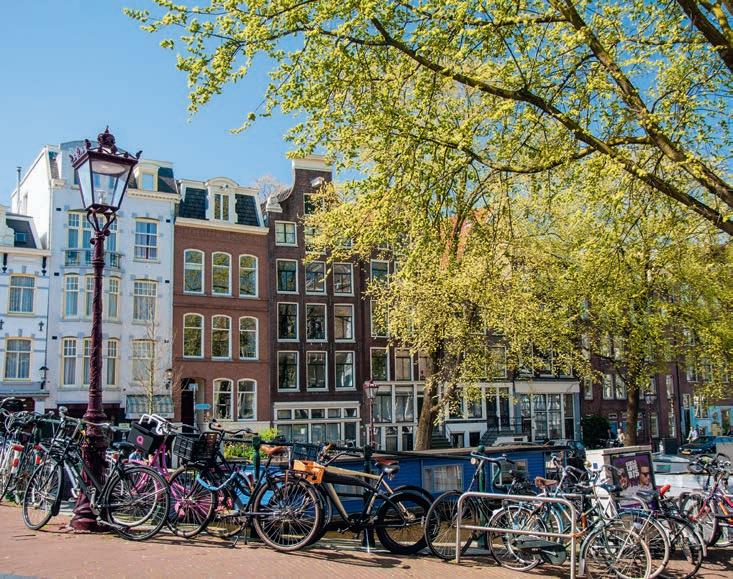

KOEN SMILDE ©
Without any previous experience in fashion, three childhood friends from Amsterdam decided to start their own streetwear label in 2012. Daily Paper quickly conquered the world.
BIJLDERDIJKSTRAAT 132 DAILYPAPERCLOTHING.COM 9
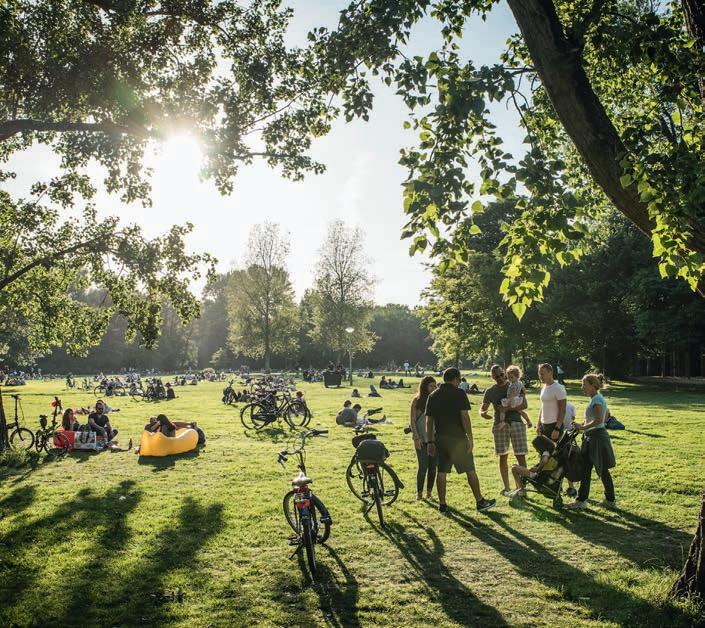
something of a national pastime. City policies involve a commitment to carbon-neutral transport, including a ban on polluting vehicles in the coming years. Amsterdammers also take every opportunity to enjoy their local parks. Vondelpark might get all the attention, but Amsterdam’s lush green spaces don’t stop there. For a quieter stroll, picnic or sports game, locals love Beatrixpark, Erasmuspark, Amstelpark and, of course, the Amsterdamse Bos (Amsterdam Forest), which is three times bigger than New York’s Central Park. It has its own petting zoo, several playgrounds, an outdoor theatre, cycling trails and cafés. And don’t miss Amstelveen’s cherry blossom park (Kersenbloesempark) that bursts into vibrant pink every spring. Experience Amsterdam’s authentic character for yourself and find even more reasons to love its one-of-a-kind charms. ››

Vondelpark


CRIS TOALA OLIVARES ©
Doing Amsterdam proud
Amsterdam has a long-standing history of supporting LGBTQ+ communities, and newcomers continue to nd a home away from home among its open-minded residents. The annual Pride Amsterdam celebrations light up the city in every colour of the rainbow with a full spectrum of events. Lively queer cafés such as those on Reguliersdwarsstraat, the newly opened Pamela in Oud-West, Prik in the centre and Café ’t Mandje on Zeedijk keep this spirit of inclusivity alive and help newcomers to feel at home.
Beyond ‘bitterballen’
Amsterdam’s food culture is on the up and up. New food trends are jumped on quickly, and there are more and more vegetarian and vegan offerings. Local, seasonal produce and sustainability initiatives are a common thread – try zero-food waste concepts such as De Ceuvel, Instock and Spirit.

Interview
10 | LET’S ASK THE MAYOR
Welcome Back!
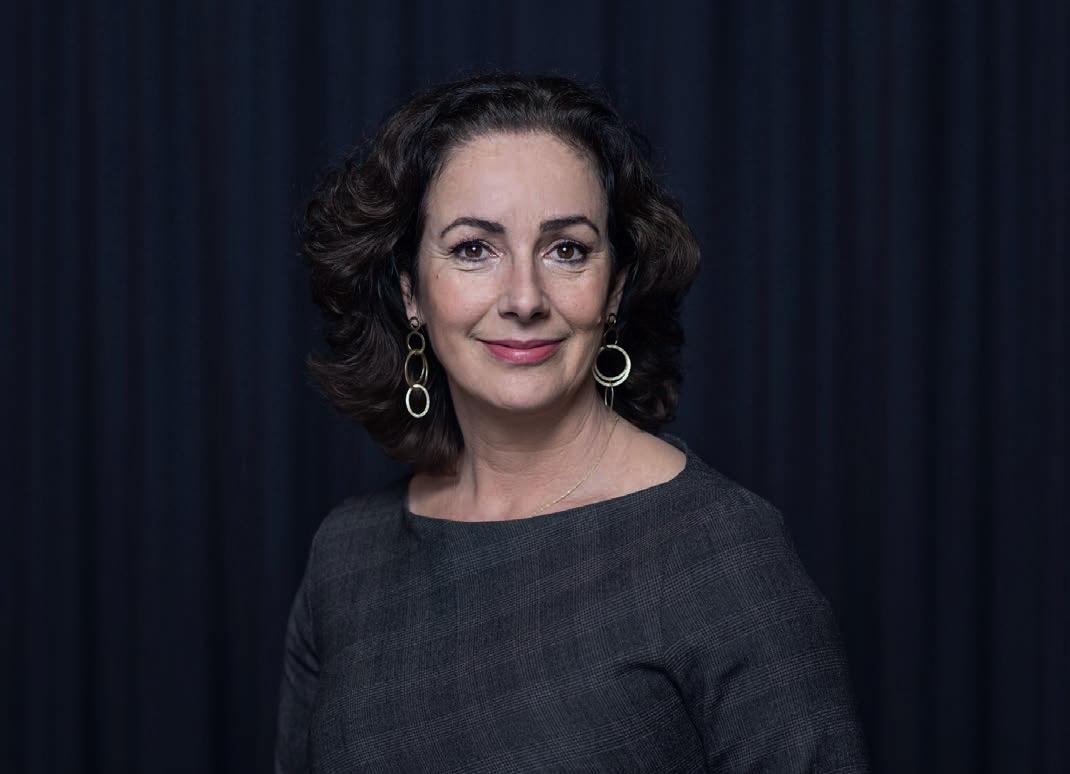
Amsterdam mayor Femke Halsema invites you to rediscover Amsterdam.
How have you personally experienced the need to close this city in the past year? ‘The pandemic has had a huge impact on Amsterdam. Many people have been a ected. Our visitor economy sustained unprecedented damage. The city has su ered not only economically but also socially. Families came under pressure: we see children who are behind in their education, young people with lack of future prospects, loneliness among the elderly and increasing insecurity for large groups of citizens. That is hitting me enormously.’ It has also brought Amsterdammers closer together... ‘Sure! Amsterdammers have never before spent so much time in each other’s company for so long. The importance of neighbours and neighbourhoods has grown. I do get the feeling that we have been looking after each other better than before. Amsterdammers created lots of initiatives to help each other. People o ered to go to grocery shops for healthcare workers or the elderly, neighbours donated meals and arranged babysitters. All of this makes me really proud.’
TOM FEENSTRA ©


Femke Halsema was appointed Mayor of Amsterdam in 2018. She is the first woman to hold the position on a non-interim basis.
What are your hopes for tomorrow? ‘I hope the doors of the city will open and stay open, giving everyone – young and old, residents and entrepreneurs – space and the freedom to meet each other. In the parks, on the terraces, on the water, in concert halls and at festivals. Being together with loved ones, family, friends, colleagues: that is what we all crave and need after all the distance of the past year.’
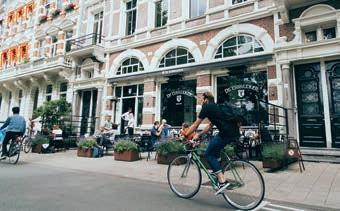
How would you like Amsterdam to develop as a visitor destination? ‘Amsterdam has always had a great attraction to visitors from all over the world. I would like to see Amsterdam continue to develop as a destination where they feel at home. In 2025 we celebrate the city’s 750th anniversary. It’s a city that is open and tolerant, where everyone is welcome. A city with an international feel but still small enough to explore on foot or by bike, where both residents and visitors feel comfortable.’

What message would you like to give visitors? ‘Amsterdam is an open, tolerant and welcoming city where you are free to be who you are and believe what you want as long as you are respectful of each other. We do not accept behaviour that damages its viability. I want to say goodbye to the image that any sort of boundless behaviour is accepted. I suggest visitors get o the beaten track and discover the lesser-known neighbourhoods and greater Amsterdam Area. The diversity of the city is enormous. Urban areas alternate with beautiful nature. In addition to famous museums, we have world-class venues, both classical and modern. Especially on the fringes of the city, exciting new places such as Sexyland in Noord and OSCAM in Zuidoost emerge every year.’
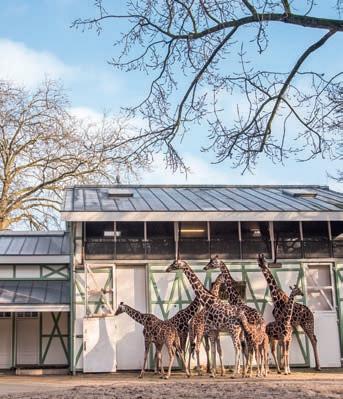
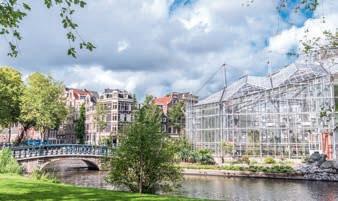
How does the city work to build a new visitor economy? ‘We work with all stakeholders – residents, entrepreneurs and cultural institutions alike – to ensure that the viability of the city is enhanced. Amsterdam remains an exciting city, but cheap entertainment needs to be less dominant, especially in the city centre, and we need more emphasis on a sustainable visitor economy. A healthy visitor economy leads to a diverse and high-quality supply of shops, restaurants and cultural institutions. It benefits Amsterdammers as well. They can enjoy the varied o ering themselves, but it also gives our younger generation opportunities in training places and internships. A healthy balance between the needs of residents and visitors ensures that Amsterdam will remain an attractive place in the long term.’
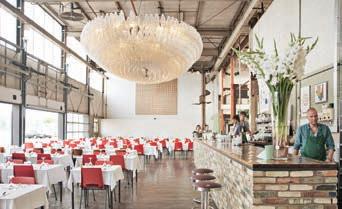
If Amsterdam were a person, what would be its main features? ‘I would say Amsterdam as a person is independent, confident and open-minded. Someone who inspires and enriches, o ers room to deviate, asks questions and provides answers. Someone who loves unexpected encounters, classic beauty and frayed edges. Amsterdam is proud and looks forward to the future.’
What are your personal tips for visitors? What is your ideal day o in Amsterdam?
‘I start with breakfast and co ee on the terrace of De Ysbreeker, looking out on the Amstel River. Next, I stroll north along the Amstel and, depending on my mood, take a right turn towards the botanical gardens in the Plantage neighbourhood. Or I go left to check out the latest exhibition in one of our wonderful small museums, such as Foam (I’m a big fan of contemporary photography) or the historical canal-house museums Geelvinck or Van Loon. In the afternoon, I get on my bicycle, ride past Artis Zoo to KNSM island and take the ferry to Noord to enjoy drinks at one of the restaurants on the banks of the River IJ, such as Stork, Hangar or De Goudfazant.’
De Ysbreeker
Foam
Artis
Hortus Botanicus
De Goudfazant

